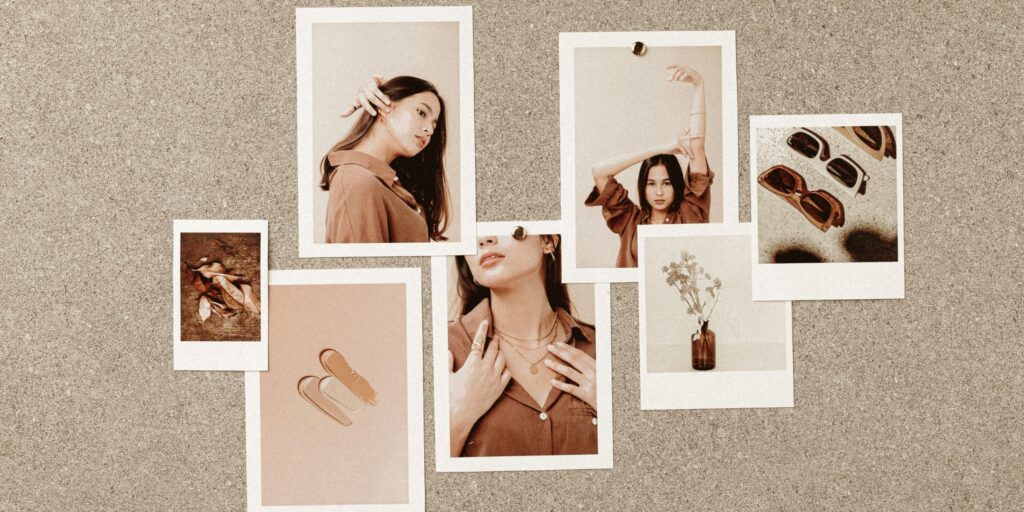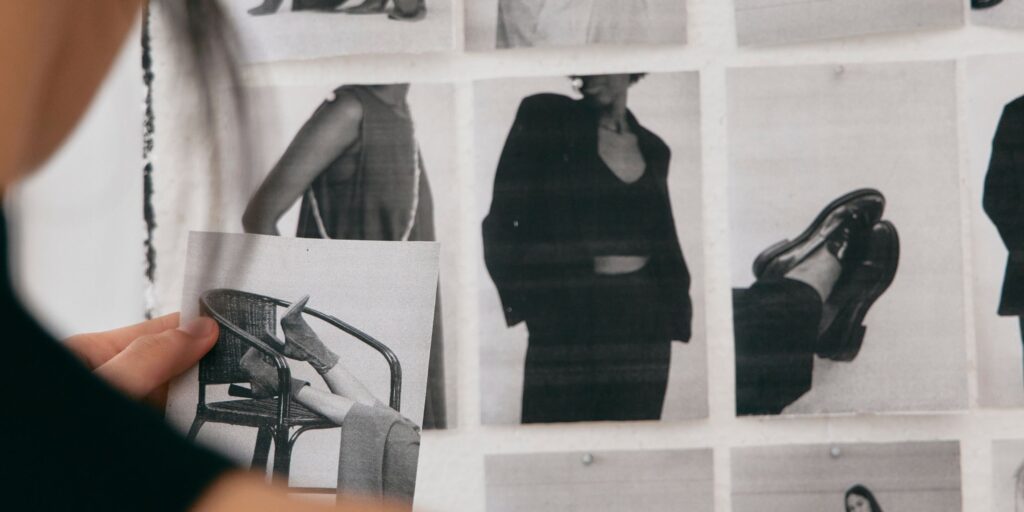Imagine walking into a room flooded with golden sunlight, the air perfumed with possibility. On a nearby table sits a book—sleek, tactile, brimming with style. You open it, and each page invites you into a new world, each outfit painting a bold narrative. That, right there, is the magic of a well-crafted fashion lookbook.
For brands and designers, the lookbook is more than just a portfolio—it’s persuasion in print (or pixels). It tells stories, builds desire, and—if done right—turns curious onlookers into devoted buyers. But how do you create a lookbook that’s not just beautiful, but unforgettable and a true sales machine? Grab a coffee, and let’s break it down.
What Exactly Is a Fashion Lookbook?

A fashion lookbook, at its heart, is a curated collection of photographs showcasing your collection or brand aesthetic. Unlike ordinary catalogs, lookbooks don’t just list products; they set a scene, draw viewers in, and tell stories.
Think mood over spreadsheet, inspiration over inventory. Lookbooks stir emotion and plant ideas—how those billowing pants might sway on a city street, or how a statement blazer could transform a Monday.
Why Lookbooks Matter: Beyond Just Pretty Pictures
Today’s shoppers crave connection. They want to see themselves—not just products—reflected in your pages. That’s where lookbooks shine:
- They Humanize Your Brand: By showing real people (or models) using your products in real places, you build trust and relatability.
- They Drive Sales: Well-executed lookbooks create serious “I want that!” moments, leading viewers directly to shop.
- They Tell Your Story: Every collection has a heartbeat—a reason it exists. Lookbooks are your chance to share that narrative, set a mood, and distinguish your brand.
Step 1: Define Your Purpose & Audience
Before you pick up a camera or hire a designer, ask:
Who is your lookbook for? What do you want it to accomplish?
Are you targeting wholesale buyers? End customers? Is your goal to launch a new collection, rebrand, or introduce a seasonal line? Get crystal clear on this; it will guide every decision, from the vibe of your photos to the words you choose.
Exercise: Build a Customer Persona
- Name your ideal viewer. Give them an age, job, and favorite coffee order.
- What inspires them? What kind of content catches their eye?
- Where will they see your lookbook—online, in print, at a trade show, as a downloadable PDF?
The more you know, the more laser-focused your lookbook will become.
Step 2: Craft a Concept That Captivates
Think of your lookbook as a film, not a product slideshow. You need plot, mood, and emotional color.
- Pick a Theme: Is this collection inspired by Parisian street style? Futuristic architecture? Windswept deserts?
- Moodboard It: Collect images, textures, colors, and references that capture the energy of your collection.
- Tell a Story: Even if it’s subtle—a day in the city, a journey, a blossoming romance—anchor your lookbook with a narrative thread.
A cohesive concept ensures every look feels intentional, not random.
Step 3: Plan Your Shots Like a Pro
This is where the left brain meets the right. Great lookbooks blend artistry with logistics.
1. Shot List Essentials
- Hero shots: Bold images that introduce your collection’s mood.
- Style breakdowns: Outfits shown from multiple angles, spotlighting key items.
- Detail close-ups: Textures, stitching, buttons—luxury is in the details.
2. Casting Counts
Diversity sells—period. Choose models who reflect your audience or, even better, invite real customers to participate.
3. Location, Location, Location
A backdrop sets the tone. Urban, nature, in-studio—any can work as long as it supports your story.
4. Wardrobe & Styling
Prep every look. Accessorize thoughtfully—sometimes less is more, sometimes more is more. Avoid overloading shots with distractions.
5. Timing Is Everything
Golden hour (just after sunrise or before sunset) offers gorgeous, natural light. Plan shoots accordingly.
Step 4: Nail the Visuals
Now comes the fun (and sometimes nerve-wracking) part: the shoot.
- Hire a Professional Photographer: Or, if budget is tight, a talented friend with a killer portfolio. Crisp, high-res images are a must.
- Consistency Is Key: Maintain similar lighting and color grading throughout. It creates visual harmony.
- Candid > Posed: Mix lifestyle shots with classic poses to keep things dynamic and relatable.
Step 5: Edit Ruthlessly
After the shoot, curate. Less is more—a 20-page lookbook bursting with strong, evocative images will always trump 50 pages of repetition.
Editing Checklist
- Do the images tell a story start to finish?
- Is the collection (and its details) clearly visible?
- Are there “breathing” pages—like blank, textured, or quote pages—to let the visuals sink in?
- Is each page visually balanced? Are there distracting elements?
Trust your instinct: if an image doesn’t serve your concept, cut it.
Step 6: Pair Words with Pictures
Too much text and people tune out. Too little, and you miss your chance to sell.
- Introduction: Open with a note from the designer or brand. Brief, personal, from-the-heart.
- Look Descriptions: A few sentences tops—focus on fabric, inspiration, signature details.
- Titles & Quotes: Use them as visual breaks or to set the scene.
- CTA: End with a clear call to action. Shop the collection, book an appointment, contact for wholesale—the next step should be obvious.
Step 7: Layout & Design Like a Dream
There’s an art and science to great lookbook design.
- Choose the Right Format: Print is tactile and luxurious; digital is shoppable and scalable. Many brands do both.
- Use Whitespace Wisely: Crowded is forgettable; give visuals room to breathe.
- Consistent Fonts & Colors: Align these with your brand guidelines.
- Interactive Elements (Digital Lookbooks): Add clickable links, short style videos, or pop-up info for a next-level experience.
If design isn’t your thing, consider investing in a skilled graphic designer. Your visuals deserve the best stage.
Step 8: Print, Publish, & Promote
You’ve built a masterpiece—now, get it in front of the right eyes.
- Printing Tips: Use quality paper and finishes (matte or gloss). Request proofs before printing a full run.
- Digital Publishing: PDF is standard; platforms like Issuu or Canva make it easy. Embed your lookbook on your website or share via email.
- Social Media Teasers: Share behind-the-scenes shots and lookbook snippets in Instagram Stories or TikTok videos.
- Press Outreach: Send your lookbook to editors, influencers, and buyers with a personalized note.
Step 9: Make It Shoppable
The goal isn’t just to impress—it’s to convert.
- Product Links: For digital, link images directly to product pages.
- QR Codes: For print, use QR codes beside each look so readers can shop instantly on their phones.
- Track Engagement: Use UTM codes or analytics to monitor what works—and refine next time.
Pro Tips for a Lookbook That Sells
- Diversity Wins: Show your styles on a variety of body types, ages, and backgrounds.
- Tell Micro-Stories: Instead of overwhelming viewers, spotlight each look with a mini-narrative (e.g., “For breezy mornings or rooftop cocktails…”).
- Behind The Scenes: Include a few candid shots from the shoot; it humanizes your brand and creates connection.
- Seasonal Updates: Refresh your lookbook regularly; keep content fresh so shoppers have a reason to return.
- Ask for Feedback: Share early drafts with trusted clients, stylists, or fans. Tweak based on what resonates.
Real-World Examples
- Zimmermann: Their lookbooks blend sun-drenched backdrops, ethereal lighting, and dreamy narratives, transporting readers straight into the heart of their collection.
- Everlane: Focuses on minimalist, real-life styling with approachable models—each look feels buy-now ready.
- Gucci: Goes all in on story, using maximalist visuals and offbeat casting for a totally unique, artistic vibe.
Avoid These Common Pitfalls
- Too Much Product, Not Enough Story: Don’t just “show every SKU”—curate and focus.
- Poor Photography: Blurry, badly-lit snaps are an instant turnoff.
- Generic Design: Copy-paste templates rarely create excitement—add your unique brand touch.
- No Call to Action: Always tell viewers how to buy, contact, or learn more.
You Did It! Now Celebrate—And Measure Success
You’ve poured your soul into your lookbook. It’s time to toast your hard work—but don’t stop just yet. Use analytics (clicks, shares, sales) or direct feedback to understand what resonated most. Was it a particular look, a story, or a model? Apply these learnings to your next edition.
Final Thoughts
Fashion is about more than just clothes—it’s about how we want to feel, the stories we tell, and the worlds we dream up. A great lookbook captures all of that in just a few pages or clicks.
Whether you’re an independent designer or a growing brand, remember: every lookbook is a new beginning, another chance to enchant and engage. So moodboard your heart out, shoot with passion, design with care, and—above all—make it irresistibly shoppable.
Your story deserves to be seen. Go tell it.

